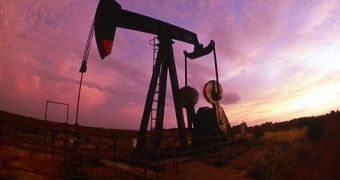Back in 1998, the costs of replacing a dried-out barrel of crude oil with a brand-new and full one revolved around $6 (€4.64). However, recent figures indicate that, in 2011, it cost as much $27 (€20.9) to do the exact same thing.
According to a report put together by Lux Research (i.e. a company specializing in offering advice to corporations, investors and governments with respect to various economic and economy-related issues), this is because the mature oil fields are witnessing a decline in their production rates, and companies are forced to look elsewhere for this precious energy resource.
If the financial estimates listed in the “Race to Replace Reserves” report are accurate, odds are that, as early as the year 2020, the money spent on locating, exploring and exploiting new oil resources will amount to a whopping $300 billion (€232.32 billion).
Moreover, the year 2033 stands to witness these expenses going up to about $400 billion (€309.76 billion).
Environmental Leader informs us that, apart from the countries presently listed as members of OPEC (the Organization of the Petroleum Exporting Countries) and national oil companies, all other organizations and governments will have to spend as much as $270 billion (€209.09 billion) in 2013 alone on keeping their oil industries up and running.
According to the same source, the recoverable oil reserves now easily available on a global scale can still provide for human society for a period of roughly 54 years.
However, once population growth is also taken into consideration, the deadline for a potential oil crisis shifts 18 years earlier.
In light of this report, it should not come as a surprise that oil and gas companies are more than willing to begin drilling activities both in the Arctic, and in other similar regions, regardless of the harsh environmental conditions they will be forced to deal with.

 14 DAY TRIAL //
14 DAY TRIAL //